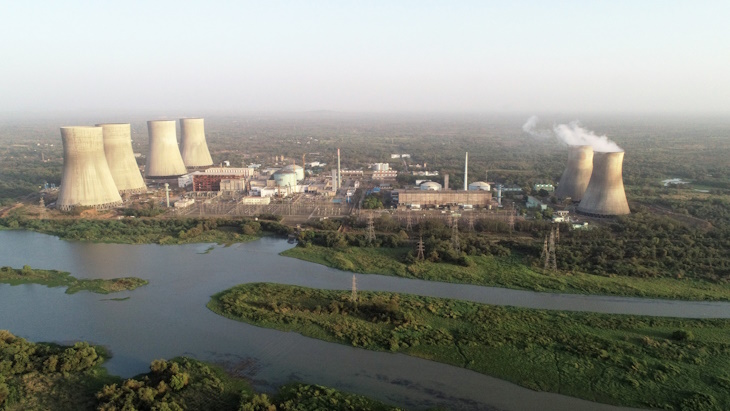Indian regulator gives go-ahead for reactor start-up
The Atomic Energy Regulatory Board (AERB) has given its permission for the first approach to criticality of unit 4 at the Kakrapar nuclear power plant. The unit is the second of two Indian-designed 700 MWe pressurised heavy water reactors (PHWRs) being built at the site in Gujarat.

The Kakrapar site: soon to be home to four operating units (Image: Department of Atomic Energy)
"Based on the satisfactory Safety and Security reviews … permission is hereby issued for First Approach to Criticality (FAC) and Low-Power Physics Experiments (LPPE) or Kakrapar Atomic Power Project Unit 4," the AERB said in an announcement dated 11 December. The permission is valid until 30 April 2024.
The AERB gave permission for the start of fuel loading at Kakrapar 4 - also referred to as KAPP-4 - in October.
First criticality is when sustained nuclear fission is achieved in the nuclear fuel for the first time. Once first criticality is reached, a series of experiments and tests will be carried out as the reactor's unit is gradually increased, before the unit is connected to the power grid. Kakrapar 3 - the first Indian 700 MWe PHWR unit - underwent its First Approach to Criticality in July 2020 and was connected to the grid in January 2021. It was declared to be in commercial operation in July this year - when it was operating at a reported 90% of its full power. Operator Nuclear Power Corporation of India Ltd received permission from the AERB to take it to the full rated capacity in the following month.
Construction of Kakrapar 4 began in November 2010. The site is also home to two 202 MWe PWHRs: Kakrapar 1 was connected to the grid in 1992 and Kakrapar 2 in 1995.
Researched and written by World Nuclear News
- China Institute of Atomic Energy
- Nuclear Power Institute of China
- Southwestern Institute of Physics
- China Nuclear Power Operation Technology Corporation, Ltd.
- China Nuclear Power Engineering Co., Ltd.
- China Institute for Radiation Protection
- Beijing Research Institute of Uranium Geology (BRIUG)
- China Institute of Nuclear Industry Strategy (CINIS)
- China Nuclear Mining Science and Technology Corporation


